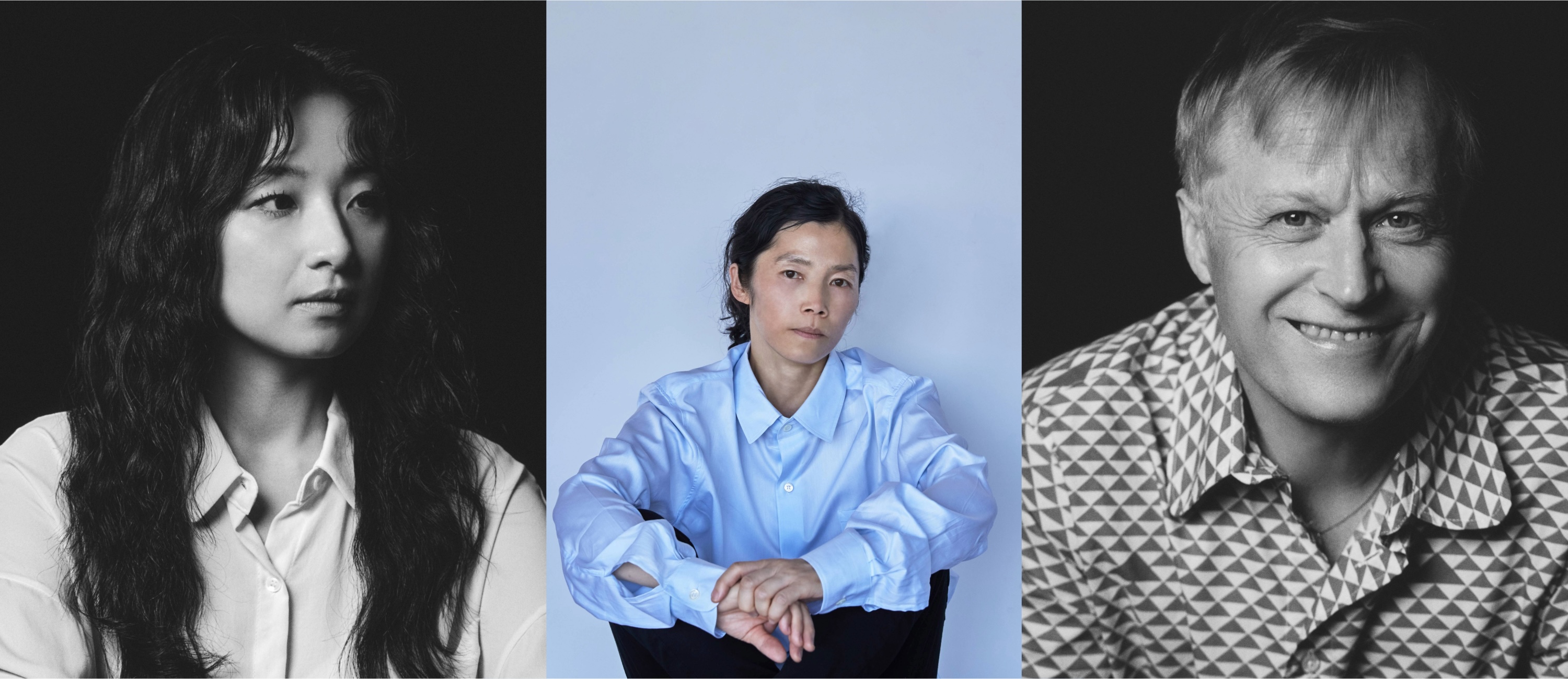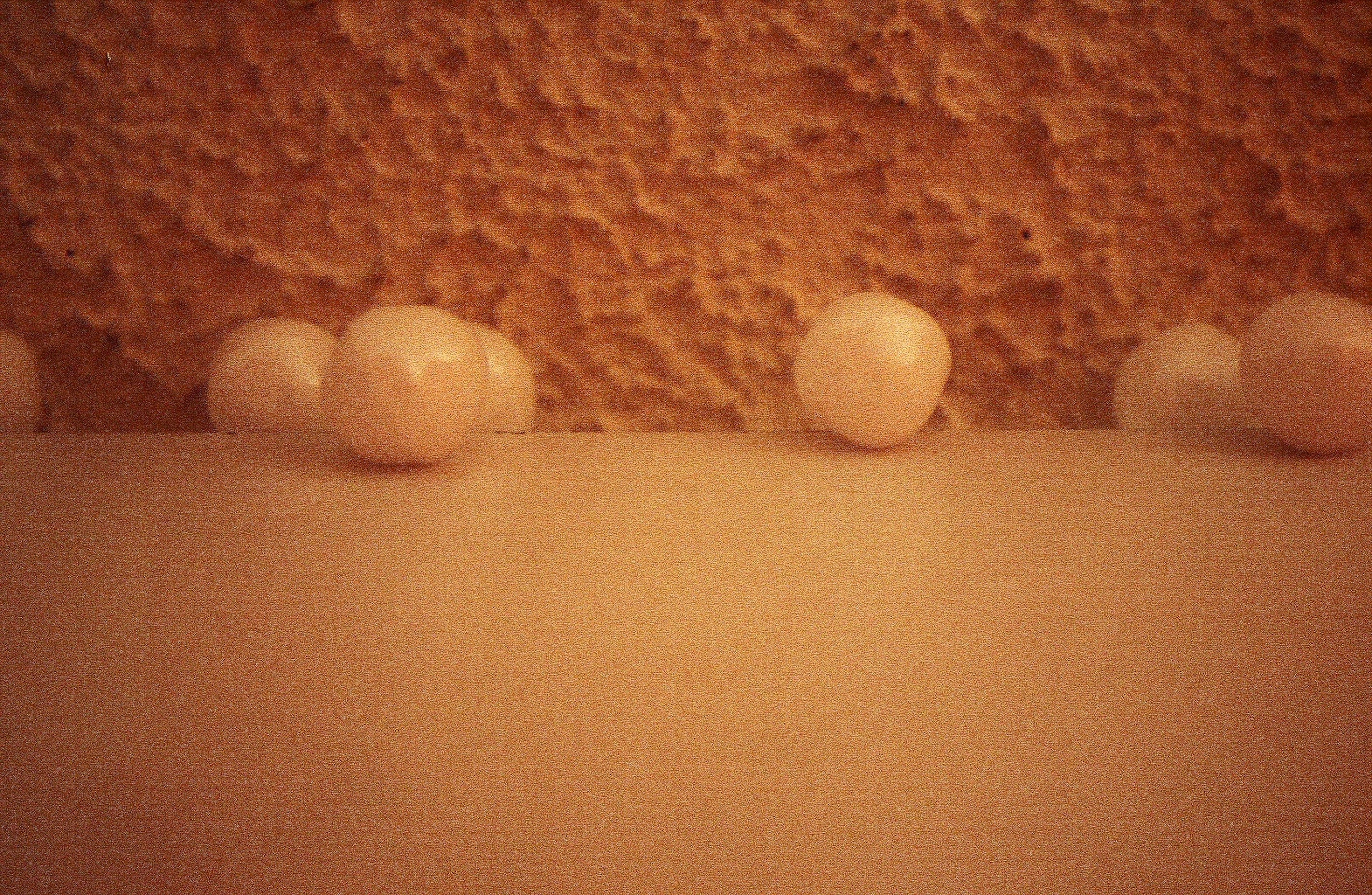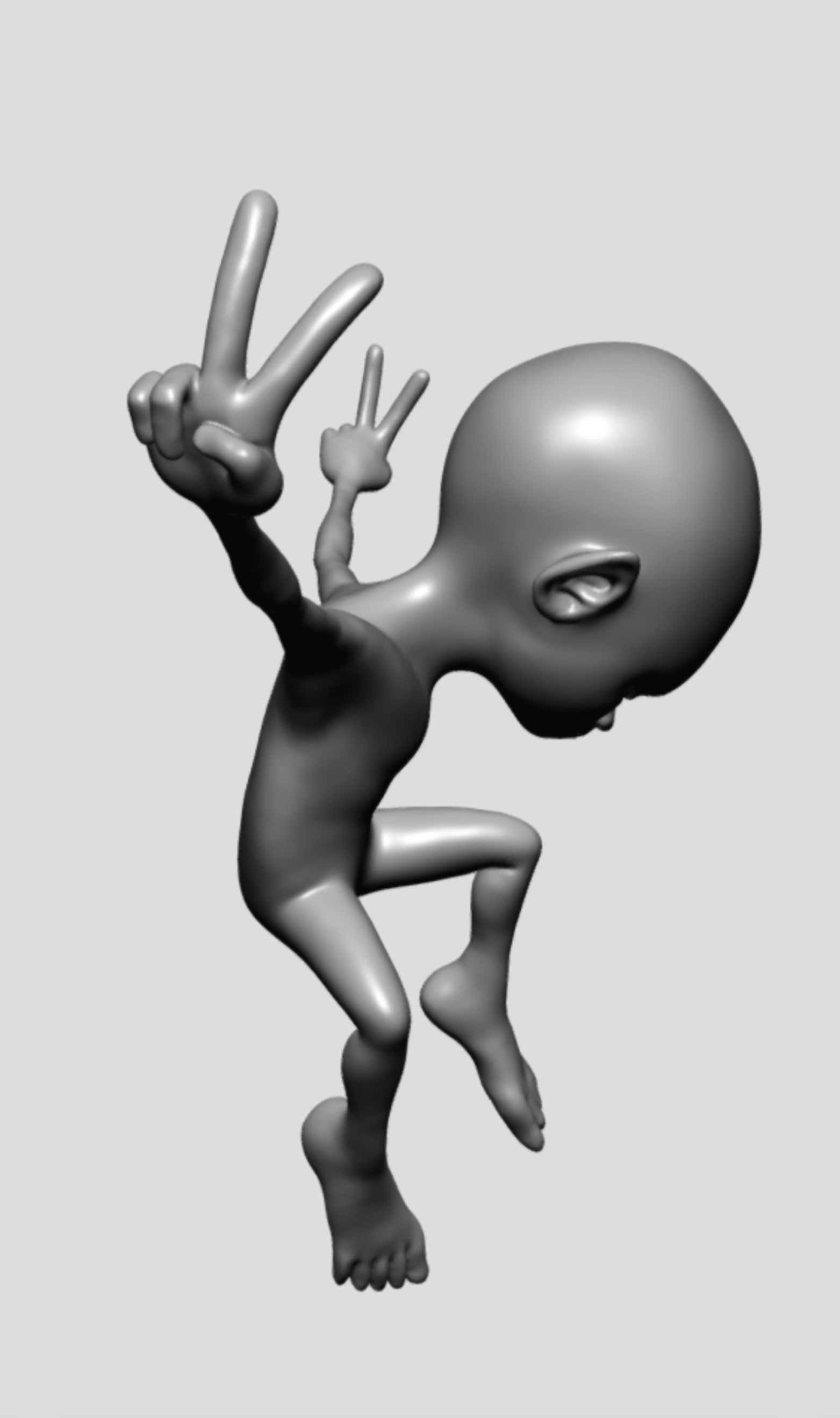Curating the Korea Pavilion with Seolhui Lee and Jacob Fabricius
By Alex Yiu
.jpeg)
(From left to right) Portrait of SEOLHUI LEE. Photo by Chae Dae Han. Courtesy the curator. KOO JEONG A. Photo by Kim Je Won. Courtesy PKM Gallery. JACOB FABRICIUS. Photo by Chae Ae Han. Courtesy the curator.
For the Korea Pavilion at the Venice Biennale, artist Koo Jeong A (they/them) has conceived of the exhibition “Odorama Cities,” based in part on on an open call to submit scent memories. Traversing though a cylindrical steel-and-glass structure, visitors will embark on a “Korean scent journey,” involving numerous scent experiences inspired by more than 600 submitted statements recollecting smells from across the country. Alex Yiu, associate editor at ArtAsiaPacific, spoke to Pavilion curators Jacob Fabricius, director of Art Hub Copenhagen, and Seolhui Lee, curator at Kunsthal Aarhus, about the work-in-progress and the meaning behind this year’s theme.

KOO JEONG A, ODORAMA, 2016, smell, diffuser, dimensions variable, at Charing Cross Station, London. Courtesy the artist.
Can you tell me about the development of the ideas behind Odorama Cities, which was first presented as Odarama in London in 2016?
Seolhui Lee: Koo's work with scents is fascinating. For over 25 years, they have consistently explored scent production as one of their key artistic elements. Koo’s first work with scent was titled PULLOVER’S WARDROBE (1995) and shown in a tiny closet at their Paris studio in 1996. We wanted to explore how scent and perfume could be taken further and presented in the exhibition, and we proposed that Koo develop a new scent project for the Korea Pavilion. Since Odorama was exhibited at the former Jubilee Line platform in Charing Cross station in 2016, the only scent project Koo has presented is “Odor: Immaterial Sculptures” (2023) at Museum für Gegenwartskunst Siegen, so we wanted to approach it anew.
This project is a deeper exploration of scent and its ability to deepen knowledge about the Korean Peninsula. It marks Koo's first project involving the public, and we have found it very empowering to involve many different voices and memories in the production of the Korea Pavilion. Koo has a long-standing relationship with perfumers and finds translating narratives into scents a playful medium while presenting its challenging invisibleness. Exploring the essence of scent, the very inhalation and exhalation of molecules seamlessly connect with other prominent interests in Koo’s art, such as immaterialism, weightlessness, endlessness, and levitation. They have always been interested in seeking a balance between the visible and the invisible.

Installation view of KOO JEONG A‘s PULLOVER’S WARDROBE, 1995, mothballs, dimensions variable, at private home studio, 16 Rue Etienne Marcel, 75002 Paris, France, 1996. Courtesy the artist.
Can you discuss the process and themes from this open call, as well as any discoveries that emerged from the public's stories?
Jacob Fabricius: On June 25, we launched a three-month open call to gather memories of the smell of cities and hometowns. We advertised it on Instagram and other platforms and contacted various groups, including the North Korean Refugee Foundations. Seolhui traveled to South Korea for a month to spread the word, visit government offices, and contact foreign journalists. Together with our curatorial assistants, NaJeong Lee and Yoojin Jang, she connected with several diasporic Korean communities and groups. Our goal was to gather as much information as possible over three months, as including and involving public voices and personal stories has been one of the cornerstones of this project.
Describing a scent memory can be tough. Some find it easy, while others struggle. We've received various responses, from single words to lengthy essays. Interestingly, some scent memories have been passed down for generations, dating back to 1945 or even the 1920s.
Advertising campaign of KOO JEONG A’s ODORAMA CITIES at COEX KPOP Square by CIRCA, Seoul, 2023. Courtesy CIRCA.
Lee: The scent memories we have collected are meaningful, span decades, and hold unique stories. Due to restrictions, connecting with North Korean citizens was challenging, so we collected scent memories from foreigners who had visited Pyongyang and other cities, and older generations who were born in North Korea but moved to the South during the Korean War. We also reached out to Korean adoptees in countries like Denmark, which added a unique layer to the project. Through this journey, we have developed strong and distinctive narratives, which have generated many stories and keywords to help develop perfumes.
We also ran a three-month social media campaign and a one-month advertising campaign on a large screen managed by CIRCA in Seoul, South Korea. The campaign was closely tied to our tight production timeline with the Korean scent brand NONFICTION. To meet the production schedule for the Pavilion opening, we submitted the scent memories by September 2023.
After collecting all the statements, how do you communicate them to the perfumers?
Lee: Together with Koo, we read through all the narratives and selected some favorites. We extracted keywords from these stories; for example, someone might mention “olfactory smell” or “grandmother's house smell.” We compiled a list of keywords from Koo's favored narratives and sent them to NONFICTION, who then used them to make the fragrance with the 16 perfumers.
We created two types of scents: a commercial scent, which we're giving away at the preview to media and VIPs, and a noncommercial scent, which will be installed inside the pavilion. The commercial scent is more process-driven due to its wearable nature, whereas the noncommercial scent is more artistic and experimental and presents a challenge. The commercial scent will be available for sale at NONFICTION’s flagship stores in Seoul.
.jpeg)
3D render of KOO JEONG A’s KANGSE SpSt, 2024, bronze, plywood metal, pigment paint, scent diffuser, sensor, 317 × 74 × 162 cm. Courtesy the artist.
In Odorama Cities, the artist used light and a fragrance machine to fill the space with scent, along with a minimal floor covering of white vinyl or plastic. How will the Pavilion incorporate scent as the central element through installations?
Fabricius: The space will be minimalistic and feature five elements for on-site presentations. A bronze sculpture inspired by Koo's animated works will diffuse scents. The Pavilion will have a wooden floor with engraved infinity symbols. Inside, two large wooden rings will symbolize perpetual, endless motion. A wall painting and immersive scent experience will be available, with scent diffusion from the sculpture, selected points, and possibly on the floor and walls.
We'll introduce 16 scent experiences inside the Pavilion, from industrial to natural, and even a fish market-like smell. Additionally, the Korean company NONFICTION produced the commercial perfume ODORAMA CITIES. The bronze sculpture, made in Switzerland, will emit the same scent as a commercial perfume that represents the Korean Peninsula. The scents will be strategically placed around the space. The installation's concept is that, like the medium itself, there are no boundaries—the scent constantly diffuses and transpires around it.
The infinity symbol on the floor and the wooden rings, known as Möbius rings, are both part of Koo's art installation. The symbol represents the continuous flow that ties everything together, while the rings serve as sculptural elements. Infinity and levitation are returning interests for Koo, as are star symbols. Mats Stjernstedt, Seolhui, and I are curating Koo’s solo exhibition “EHM (Event Horizon Malmö)” at Malmö Konsthall, Sweden. The exhibition will be on display starting from June. There will be one gigantic star-shaped skating park inside the institution. Stars also represent infinity and the eternal universe.
_(4980886312).jpg)
Korea Pavilion during the Venice Architecture Biennale in Giardini, Venice, 2010. Photo by Jean-Pierre Dalbera via Wikimedia Commons.
I'm curious about why North Korea is included. Does it hold any special meaning for the artist or the Korean people due to historical ties or shared emotions? How is this theme represented in the exhibition?
Lee: As Koreans, the division of our country presents us with never-ending questions. Since the Korean War (1950-53), it has separated families and people, and a constant feeling of distance exists. Koo and I can relate to this, especially since we often live abroad and travel extensively, feeling distant from South Korea.
Koo left South Korea in the 1990s and has yet to return. Thus, we always ponder our sense of community boundaries and how these are intertwined with political situations. Despite the changing political landscape, we retain strong memories of our connections to North Korea. We often discuss the separated families and how, despite some having passed away over a decade ago, their legacy remains. The division affects not only those directly separated but also influences daily life and memories for many of us, like my younger brother, who had to serve in the military due to the situation with North Korea.
Despite their global success, Koo has yet to have a solo exhibit in any public institution in their home country, South Korea. This raises questions about the significance of an artist's home country in their practice. Koo views education as understanding foreign structures, and they approach their work as travelers and foreigners, living and creating art across the globe.
Fabricius: Initially, we aimed to target eight cities from both the South and the North, but we realized we would miss out on the small towns and rural stories. Therefore, we made it an open selection process. We were dependent on people who wanted to tell their stories. The stories reflect many aspects, such as experiences in nature, school memories, family stories, or specific odors related to work or material. Some stories have a traumatic twist and psychological dimension to the sensory memory. All stories will actually be available online. Here, we have tried to keep the author’s tone of voice and only corrected it as strictly necessary.
Interpretations play a key role in creating the perfumes. Just like we all have different interpretations of things like fog or sunlight, perfumers may interpret things differently. Translating a written text about the smell of the sea into an actual perfume is an interesting process, similar to how we translate our thoughts into language. It's fascinating how scents are also subject to interpretation. The 16 scents are developed by 16 different perfumers, one from Japan, one from South Korea, one from Ireland, and 13 from France, living in Paris, Shanghai, and Singapore. It is truly an international project where non-Koreans are interpreting essential Korean odors. I find this aspect—which also relates to Pedrosa’s theme for the Biennale, “Foreigners Everywhere”—very interesting.

Videos of KOO JEONG A’s ODORAMA CITIES, 2023-24, by CIRCA. Courtesy CIRCA.
What insights does the exhibition offer to those who have neither visited nor have a direct connection to Korea?
Lee & Fabricius: The exhibition aims to provoke curiosity and inspire visitors to delve deeper into universal reflections. It blends political themes with aesthetic and poetic ones, challenging visitors with concepts like infinity and weightlessness. The intention is to evoke mental imagery that might initially seem elusive but can ultimately stimulate conversation and evoke other memories. Regardless of one's stance on the scent or other sensory elements, the exhibition is meant to spark conversations.
We aim for a poetic impact, encouraging the audience to reconnect with sensory memories from childhood. In our fast-paced, digital world, where the visual is emphasized, and patience is fleeting, we often neglect the tactile aspects of life. Small physical experiences, such as a child's connection to a grandparent, are significant and shape our lives more than we realize.
These sensory memories aren't exclusively tied to Korean culture but are universal. Yet, they often go unnoticed, even though they can deeply influence one's life trajectory. We invite people to reconsider those elusive scents and sensations that have woven into their lives. It's about sparking that initial curiosity ("What was that familiar smell?”) that leads to rediscovering beautiful, hidden memories. Scent knows no borders.

Installation view of KOO JEONG A’s OooOoO, 2019, skatepark, music of Koreless, luminous paint, dimensions variable, at Triennale Milano. Photo by Gianluca De Ioia. Courtesy Triennale Milano.
Koo Jeong A's "Odorama Cities" opens on April 20 and will be on display until November 24 in the Korea Pavilion at the 60th Venice Biennale.
Koo Jeong A is an internationally acclaimed artist who explores the ephemeral nature of everyday life through a range of media. Their works blur the boundaries between fact and fiction, the actual and imaginary, and are often site-specific, questioning the limits of our world. Koo has exhibited at prestigious institutions worldwide, including Centre Pompidou and Guggenheim Museum, and has won the Hermes Korea Prize for contemporary art.
Seolhui Lee, born in 1987, is currently the chief curator at Kunsthal Aarhus in Denmark. Prior to this, she worked as a curator at Seoul Museum of Art, head of the exhibition team for the Busan Biennale 2020 and for the Korea Artist Prize 2012. Lee has also been an adjunct professor at Korea National University of Arts and Kaywon University of Art & Design. She has published essays in Korean Contemporary Art Since 1990 and Reading Korean Contemporary Art with Keywords and is a contributor at Art In Culture.
Jacob Fabricius ,born in 1970, is a Danish curator. He is the current director of Art Hub Copenhagen (since 2021), and was previously the artistic director at Kunsthal Aarhus (2016-2021) and Malmö Konsthall (2008-2012). In 2019, he curated the Words at an Exhibition exhibition for Busan Biennale 2020. Fabricius has also held positions at Kunsthal Charlottenborg, Centre d’Art Santa Mònica, and Cneai=.
Alex Yiu is associate editor at ArtAsiaPacific.








